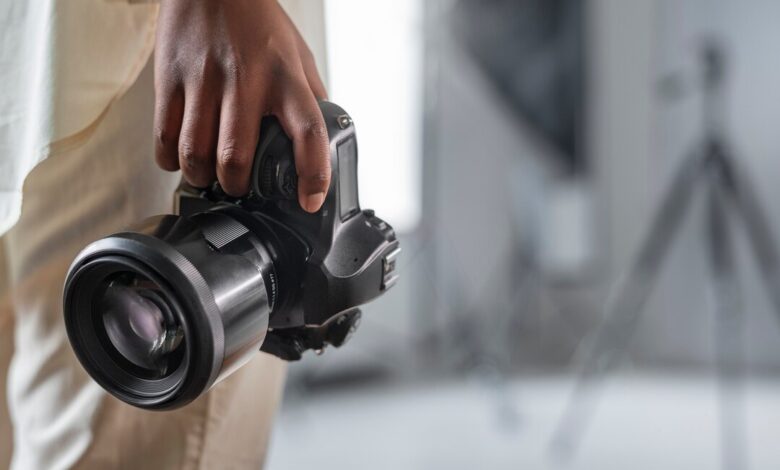20 Unwritten Rules About Photography

Photography is more than just capturing a moment—it’s about respecting people, places, and the art itself. While there are many formal guidelines on techniques, there are also unwritten rules that seasoned photographers follow to make sure their work is both respectful and impactful. These rules, based on experience and common courtesy, can help elevate your photography while maintaining good relationships with your subjects and surroundings. Here are 20 unwritten rules about photography:
- Always Ask for Permission
Whether you’re taking photos of people, private property, or special events, it’s courteous to ask for permission. Respect for privacy is essential, and people often appreciate being asked before being photographed, especially in intimate or personal settings. - Respect the Moment
Don’t let your need for a photo ruin the experience. Sometimes, it’s better to enjoy a moment in real-time rather than worrying about capturing it. Know when to take a photo and when to simply be present. - Don’t Interrupt the Scene
If you’re photographing an event, meeting, or performance, don’t disrupt the flow of things. Stay unobtrusive and avoid blocking other people’s view or creating distractions for those involved. - Respect Cultural Norms
Different cultures have different attitudes toward photography. Some may be open to being photographed, while others might consider it disrespectful. Always research cultural norms and practices before snapping away, especially in sensitive environments. - Avoid Over-Editing
While editing photos can enhance their visual appeal, excessive retouching or manipulation can mislead viewers and distort the subject. Be mindful of how much editing you do, especially if you’re portraying something authentic. - Don’t Take Photos in Restricted Areas
Certain places, like government buildings, military zones, and religious sites, may have rules against photography. Always check for signs and guidelines, and never attempt to take photos in restricted or sensitive areas. - Don’t Exploit Vulnerable Subjects
When photographing people, especially those in difficult situations (e.g., the homeless, people in distress), always be respectful. Avoid exploiting vulnerable individuals for the sake of a photograph, and prioritize their dignity. - Know Your Equipment
You should always be familiar with your camera equipment, settings, and capabilities. Nothing is more frustrating for a subject than a photographer who fumbles with gear when they should be focusing on the moment. - Don’t Shoot Without Context
Always ensure that the image you’re capturing has context and purpose. Randomly snapping photos without consideration can come across as thoughtless or disrespectful, especially in personal or private settings. - Be Aware of Lighting
Lighting is one of the most important aspects of photography. The time of day, the weather, and indoor lighting all have a significant impact on your photos. Work with natural light whenever possible, and adjust your settings accordingly. - Respect People’s Personal Space
Especially in public or private events, be mindful of personal space when taking photos. Getting too close can make people uncomfortable, so always respect their boundaries while capturing the shot. - Capture Genuine Emotion, Not Just Poses
Candid moments often hold the most emotional depth. While posed photos have their place, candid shots often tell a richer story and capture genuine expressions and emotions that posed pictures can’t. - Don’t Forget to Take Multiple Shots
It’s always a good idea to take more than one photo of a scene, subject, or moment. Lighting, angles, and expressions can change rapidly, and having multiple shots ensures you get the best one. - Don’t Overcrowd Your Frame
Simplicity often leads to stronger photos. Avoid overloading the frame with unnecessary details or distractions. Focus on the subject and ensure the composition doesn’t confuse the viewer. - Be Aware of the Background
The background can either enhance or distract from the subject. Pay attention to what’s behind your subject—remove or reposition anything that could distract from the focal point of your photo. - Respect the Rights of Others’ Work
If you’re photographing something inspired by another artist’s work, always credit them appropriately. Plagiarism in photography, such as copying another photographer’s style or idea without permission, is not only unethical but also illegal in many cases. - Consider the Story You’re Telling
Photography is storytelling. Think about what story your photo is telling and how it will be perceived. A powerful image conveys emotion, context, and meaning to the viewer. - Don’t Take Photos in Sensitive Situations
Be cautious when taking photos in emotionally charged situations, such as funerals, accidents, or moments of personal grief. Sometimes, the best thing you can do is simply offer support, not a photo. - Stay Open-Minded and Adaptable
Don’t limit yourself to a specific style or subject. Stay open to new experiences, locations, and perspectives. Great photographers embrace change and evolve their style with every shot. - Give Credit Where It’s Due
When you share photos, especially if they are of other people, places, or events, always give credit to the subject, location, or photographer. Whether it’s on social media, in a publication, or on a blog, acknowledging those who contribute to the image is an important courtesy.
By following these unwritten rules of photography, you can capture beautiful, respectful, and meaningful images. Photography isn’t just about taking pictures—it’s about telling stories, building relationships, and capturing the essence of life while maintaining respect for your subjects and your art.




